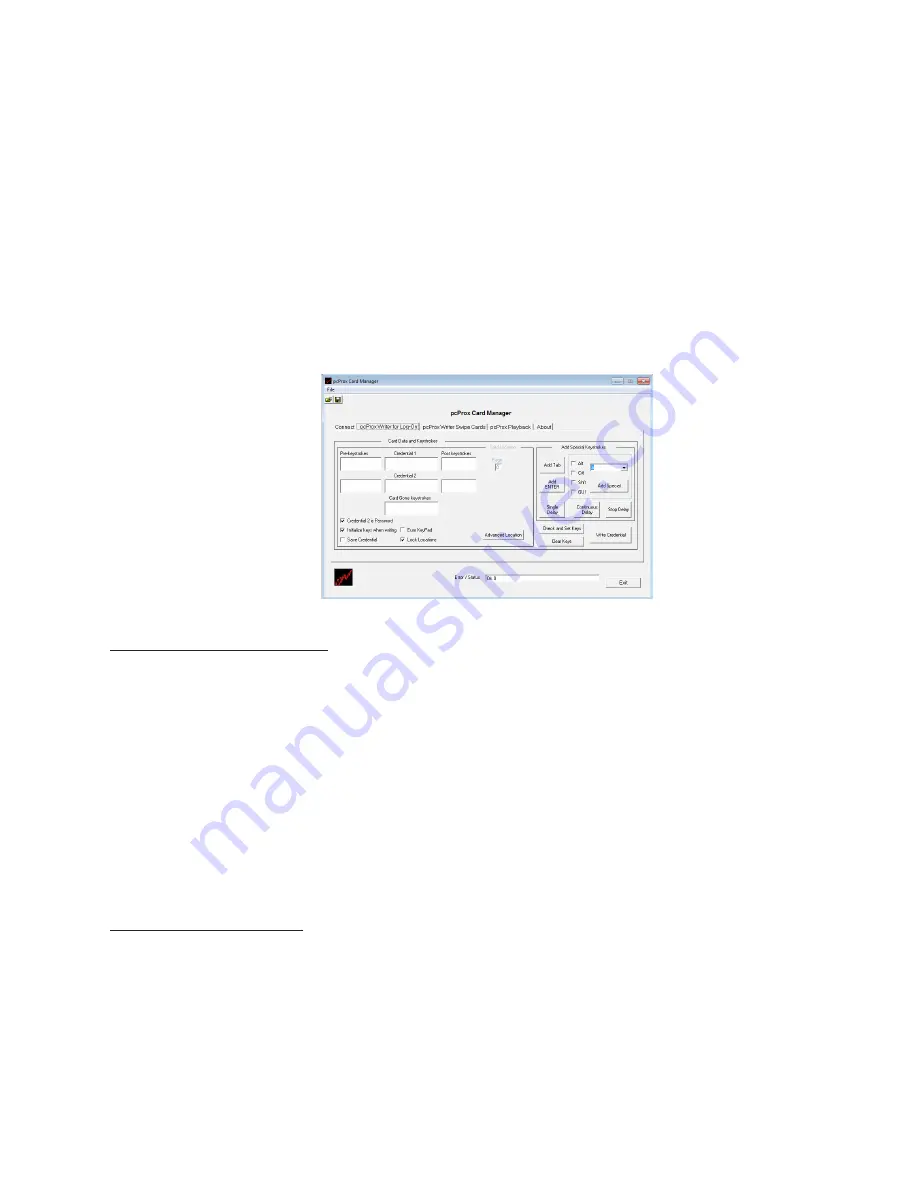
16
Chapter 3
Software
pcProx Writer for Log-On Tab
For log-on applications, the ‘form’ is actually the log-on dialog fields (username and password).
The keystrokes as simply used to land the cursor to the correct field (ctrl-Alt-Del, TAB etc.), prior to
inserting the employee related data. In fact any application requiring employee specific information is
a perfect candidate for using this system.
Note
: The pcProx Writer system is not limited to log-on applications. In fact if you using the Playback USB
reader, you should think of Playback reader as a form filler – with the contactless smart card holding the
keystrokes and the employee specific data.
For users of the Playback RS-232 you should think of the keystrokes as RS-232 characters. For
example, in a serial port truck scale device, you may need to send a HEX 01 to initialize the device.
Simply use the ‘Special Keystrokes’ and select the appropriate RS-232 required characters.
Create and Write Credentials
Access to all user data you write using pcProx Card Manager is secured by writing unique security
keys to the card. If a card location (page, application area, block) has unique keys written to it by
another application (i.e. biometric data), you will not be able to read or write to that location on the
card (See the section labeled ‘Memory Map’ for details on card locations for each type of card).
If the location is available, or in use by the pcProx system, the Card Manager will be able to create
and write keys to the card in order to secure the card’s contents in the locations you are using.
Other locations of the card are not modified.
Card Data and Keystrokes
This section holds the username and password credentials, as well as any additional keystrokes
required by the application or operating system to deliver the credentials to the correct fields on the
screen.
For example, in Windows XP a user would want to send a “GUI-L” as well as a “Alt-U” keystrokes first
prior to typing in your username.
















































